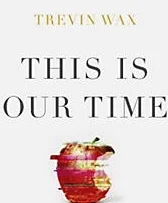The God of the Garden - A Review
Although I lived in the same house for my entire childhood, I have since moved many times. First, off to college. Then to different duty stations up and down the East Coast while I was in the United States Navy. When I got out, I went to seminary, stayed for a while, then bounced to a couple of other jobs. There has been a lot of moving in that time, as my patient wife reminds me.
There were good reasons for every move, but the constant bouncing from place to place leaves a mark on the psyche, especially for the kids who have lived in either three or four states. Some of the places we have lived we knew were temporary. When we were newly married, living in an apartment on the Thames River in Connecticut, we knew that that was not a final destination because my boat was going to move to the West Coast in a couple of years. Besides, neither of us had any roots in Connecticut.
It is that rootlessness that characterizes much of modern society. Ben Sasse’s book, Them, addresses that concept, especially as it impacts the way we think about economics and politics. It’s a feature of much of our culture. Most of us do not expect to live in one place for very long––people move about 11 times in their lifetime on average. Many of those moves are in town––from one apartment to another. However, many of those involve significant disruptions of life.
Andrew Peterson’s recent book, The God of the Garden, is about moving. Or, more accurately, it’s about a sense of place and investment in permanence despite moving. It’s also about trees, because they are the sort of permaculture that remains long after moving trucks have come and gone. It’s also about beauty, hope, and a desire to see creation flourish.
For those unfamiliar, Andrew Peterson is best known as a singer/song writer who lives in Nashville, TN. He’s well beyond the stage of waiting tables at Olive Garden to afford rent between gigs, and has become a favorite among a subset of Christians who are generally reformed and committedly orthodox. His Behold the Lamb of God album is also a recurring tour that celebrates the incarnation of Christ every year around advent, and which captures the essence of biblical theology well. It’s a CD that my family listens to frequently from November through January. He’s also recorded various other albums, which all carry a sense of longing for the resurrection and a hope in the present situation, with Peterson pouring out his heart through his fingers and with his somewhat reedy voice. While recording those albums, Peterson also managed to write and publish a quatrain of children’s fantasy novels that point readers (kids and adults) to some big ideas while telling a good story and celebrating the wonder and beauty of the world. His first non-fiction book, Adorning the Dark, is a somewhat autobiographical book, which talks about seeking to create a God-honoring beauty in the midst of a dark and crooked world.
The God of the Garden shares some similarities with his previous book, Adorning the Dark. There is a heavy autobiographical feel to the volume, with Peterson relating in more detail some of the stories that inspired some of his songs. So, for those of us who have sung along with Peterson about being buried beneath the rows of corn in the land of Lincoln where he was born, we now get some more information about what was happening during that time.
In this book, Peterson focuses on trees as the semi-permanent form of agriculture that indicates a sense of personal rootedness. So, we hear a story about a couple of maples in Illinois. The story is kind of about Maples, but it’s really about family routines and a way of living that lasted for a little while. To some degree that way of life continues to exist because the celebrated maples are still there as markers of the past. He talks about the various trees he has planted on his own homeplace—combination forest and English garden—that includes markers for his children. This is a book about place, people, and putting down roots. There is also a chapter reflecting on the likely changes in his neighborhood. Changes that are more likely to commercialize than harmonize with the beauty and wonder. It is with longing for a retention of beauty that Peterson lays out a vision of flourishing and hope for the future.
Those that are fans of Peterson will be delighted by this book. There are many phrases and ideas in his other work that come to life through this volume. But it isn’t necessary to already like Peterson’s work to appreciate the volume. Folks who understand what Sensucht is, who are votaries of the blue flower, or who understand what it means to be a bearer of the sacred flame will find much that resonates in The God of the Garden. For folks that are looking for a reason why a call to better environmental stewardship and putting down roots resonates, this book helps tie a lot of those things together, too.
This is a good read. The prose is clear and simple. The stories are engaging. One need not have a deep and abiding interest in any of the things I’ve listed above to enjoy the book. This book is a quick read that would be enjoyable for someone simply looking for a little patch of beauty on a plane flight or at the end of a long day.







































There’s no reason to doubt that Jesus was nailed to the cross. Ultimately, I trust what Scripture says about Jesus’s crucifixion because I also trust what it says about his resurrection. And that’s what we should be celebrating this week.